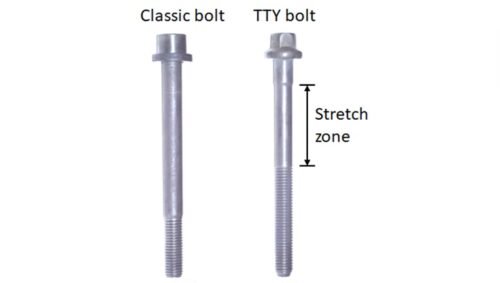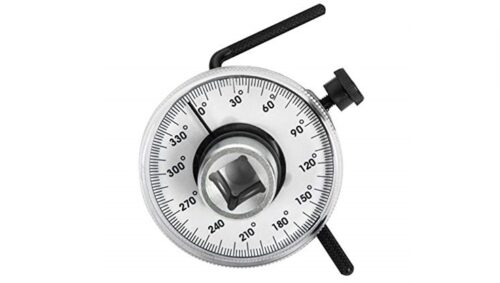Torque angle gauge
The torque wrench is not a guarantee that the screw will achieve the required tightening force. It is not the same whether tightening a clean screw or a screw that is dirty, rusty, or with a damaged vine. With a clean screw, the tightening force applied with a torque wrench is the same as the tightening force of the coupling surfaces. A higher tightening force should be applied to the dirty and damaged screw to achieve the required clamping force. Therefore, it is necessary to clean all threads before tightening. It is not recommended to lubricate the threads. In most automotive cases, the torque values specified are for dry, non-lubricated threads.
Each screw has its coefficient of elasticity. Heating and cooling, pressure, and vibration cause the screws to stretch and shrink. If they are too tight, they stretch above their endurance point and cannot return to their original position. If they are loose, they do not perform their joining function and malfunction occurs.
To avoid premature failure of the screw due to stretching and shrinkage, the manufacturers have designed a special TTY bolt. The TTY bolt is much more efficient and long-lasting than the classic screw. In the central part of the TTY bolt, there is a stretching zone that functions as a bungee cable, stretches and returns to its original position, and always has sufficient tightening force. Compared to the classic, TTY bolts have a longer service life, which ensures reliable fixing of the cylinder head to the block during longer operation. However, TTY bolts are disposable and must be replaced after removing the cylinder head.







